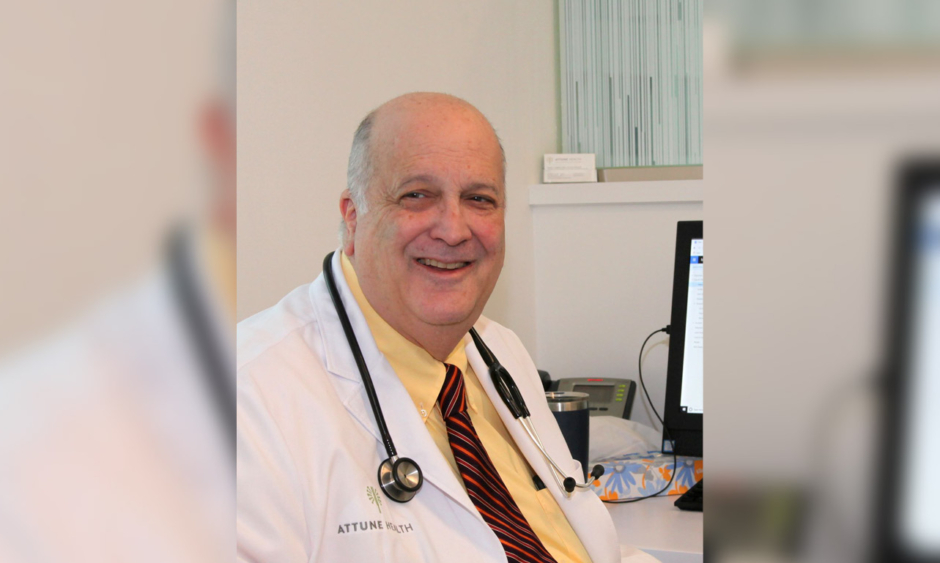Clinical Prof Daniel Wallace | Rheumatologist, Cedars-Sinai Medical Center and Ronald Reagan UCLA Medical Center, Los Angeles, California, USA
![]()
You undertook both your residency and rheumatology training at Cedars-Sinai Hospital in California, USA, and continue to work there more than 40 years later. What is it about Cedars-Sinai’s healthcare community and training that has kept you there?
My father joined the staff of the old Cedars of Lebanon in Hollywood in 1947 as a cardiologist and practiced there for 60 years. He worked with Swan, Ganz, Prinzmetal and Corday (developer of the Holter monitor). The old hospital is now the world headquarters of the Church of Scientology. I was a Cedars summer intern in college and established lots of lasting friendships and relationships. After doing an internship at Brown University, it was natural to return home.
Why rheumatology? What about the specialty drew your interest, and has kept your interest throughout your clinical practice?
When I was a medical student at the University of Southern California (USC), I was inspired by Ed Dubois MD, who had the largest lupus practice in the USA and ran their lupus clinic. I became friendly with him and eventually took over his practice when he became ill. The patients were fascinating. Ed had clinic hours at 9:00 am, 10:30 am, 1:00 pm, and 2:30 pm, where he scheduled six patients for each slot. The patients bonded with each other, and fought to have a specific slot so they could go to lunch together. This eventually led to the formation of The American Lupus Society, which later merged with the Lupus Foundation of America.
You have been practising rheumatology for more than 40 years; how has practice changed in that time, and what do you think has been the greatest development in care in rheumatology?
When I was a fellow in the late 1970s, we were already using methotrexate, cyclophosphamide, azathioprine, and prednisone. Dr George Friou, who was the first to introduce anti-dsDNA and ANA to the clinic, was one my professors at USC. The lupus anticoagulant was discovered by Sam Rappaport, who was my father’s medical school classmate and one of my mentors. What’s new are updated serologies, biologics, more bureaucracy, less emphasis on the physical examination, and electronic medical records.
Your practice currently cares for over 1,500 patients with lupus – the largest patient cohort with lupus in the USA. How does your practice best utilise this cohort for research and clinical insight?
Until about 2000, most lupus research was single-centre oriented. We have been able to leverage our cohort as part of the Systemic Lupus Erythematosus International Collaborating Clinics (SLICC) and the Lupus Clinical Investigators Network (LuCIN: a 57-centre network in the USA and Canada), and have multiple other collaborations. Cedars-Sinai has some brilliant immunologists who we regularly work with.
You set up the Wallace Rheumatic Diseases Foundation to support research and access to clinical care for patients with rheumatological diseases. What prompted you to set up your own foundation?
Unfortunately, the US does not have universal access to health care. Our Foundation provides free rheumatologic outpatient care to uninsured and underinsured patients. Grateful patients asked for the opportunity to give back in a meaningful way. We also support research at Cedars-Sinai and summer fellowships.
On top of more than 400 publications in rheumatological research, you have written more than 30 book chapters and published eight of your own textbooks. How do you see more traditional formats like academic textbooks fitting into medical training and continuing medical education going forward, in the age of digital or online formats?
There are fewer major medical book publishers and the number of new titles being published is down by 80%. Medical journals are now owned by a handful of large conglomerates. However, this consolidation is allowing textbooks to be updated more quickly and printed a la carte, or per order rather than waiting for a new edition to come out. The new system allows for ebooks, and greater availability of specific chapters and PowerPoint slides.
You were recently in the news, discussing low rates of COVID-19 in your patients with lupus. What has been your experience of COVID-19 in this population, and what patterns have you spotted that may help inform prevention or care?
In my experience and those of my colleagues, there may be less COVID-19 among our rheumatic disease patients, and their cases may be milder. I am part of a LuCIN initiative that is currently looking into this. It may have something to do with higher levels of interferon-a among some of the patients that protects them from certain viruses, but we really don’t know.
You were named one of America’s Top Doctors by Castle Connolly 11 years running; 2004–2014, as well as several times since then. What about your clinical care led to this distinction in your opinion?
It’s probably a measure of respect from my colleagues who do the voting. I like to think that our staff gives time and attention to more than what is covered in an office visit. We try to assist with their social needs and coping mechanisms.
Based on your experiences, what advice do you have for rheumatologists in the early days of their careers?
Decide where you want to live, and you can be successful there. If one is fulfilled and happy, then decide what your best skills are and excel in them. Never worry about anybody getting another opinion and be open minded.








